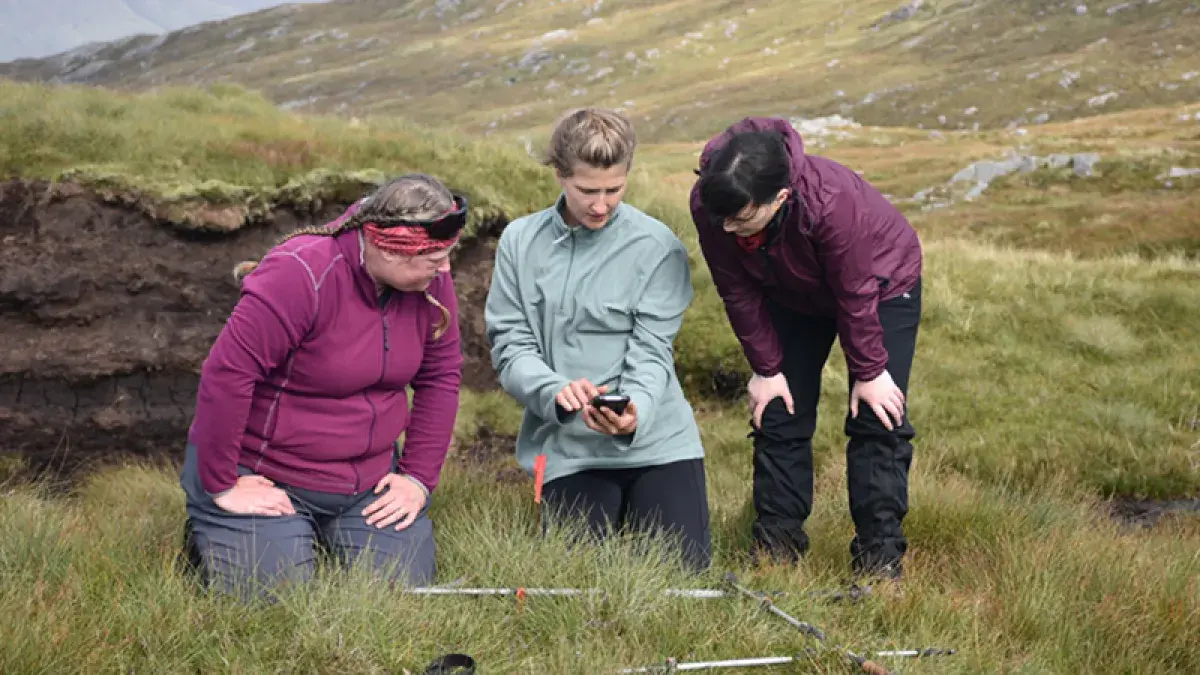A £60,000 grant awarded by NatureScot Peatland ACTION will enable the University of Edinburgh to use new cutting-edge technologies to track peatland restoration at a site in the West Highlands.
As one of the largest degraded ecosystems in Scotland, yet one of its most important carbon sinks, national efforts are taking place to conserve and restore damaged peat bogs. This effort is being led by Peatland ACTION, funded by Scottish Government and delivered in partnership with NatureScot and other agencies.
Peatlands store vast quantities of carbon, which can be released to the atmosphere when they are degraded, so restoring peatlands is an important solution to tackling the ever-growing climate crisis.
Healthy peatlands also play a vital role in flood regulation and source water quality and are a unique habitat for many species of wildlife.
To fully understand the impacts and effectiveness of peatland recovery, monitoring needs to take place before, during and beyond restoration, experts say.
Monitoring efforts
The new relationship between the University of Edinburgh and NatureScot Peatland ACTION, will secure monitoring project funding for three years of the University’s research at Ardtornish Estate in Morvern.
One of six partnerships the University has made for a programme it is leading to combat climate change and nature loss in Scotland, its work with Ardtornish Estate will see 150 hectares of blanket bog – alongside another 1,000 hectares of woodland – restored at the estate over 50 years.
Alongside capturing carbon, increasing biodiversity and delivering community benefits, a key element of the partnership will also see the site used as an outdoor research lab for research with academics and students at the University.



